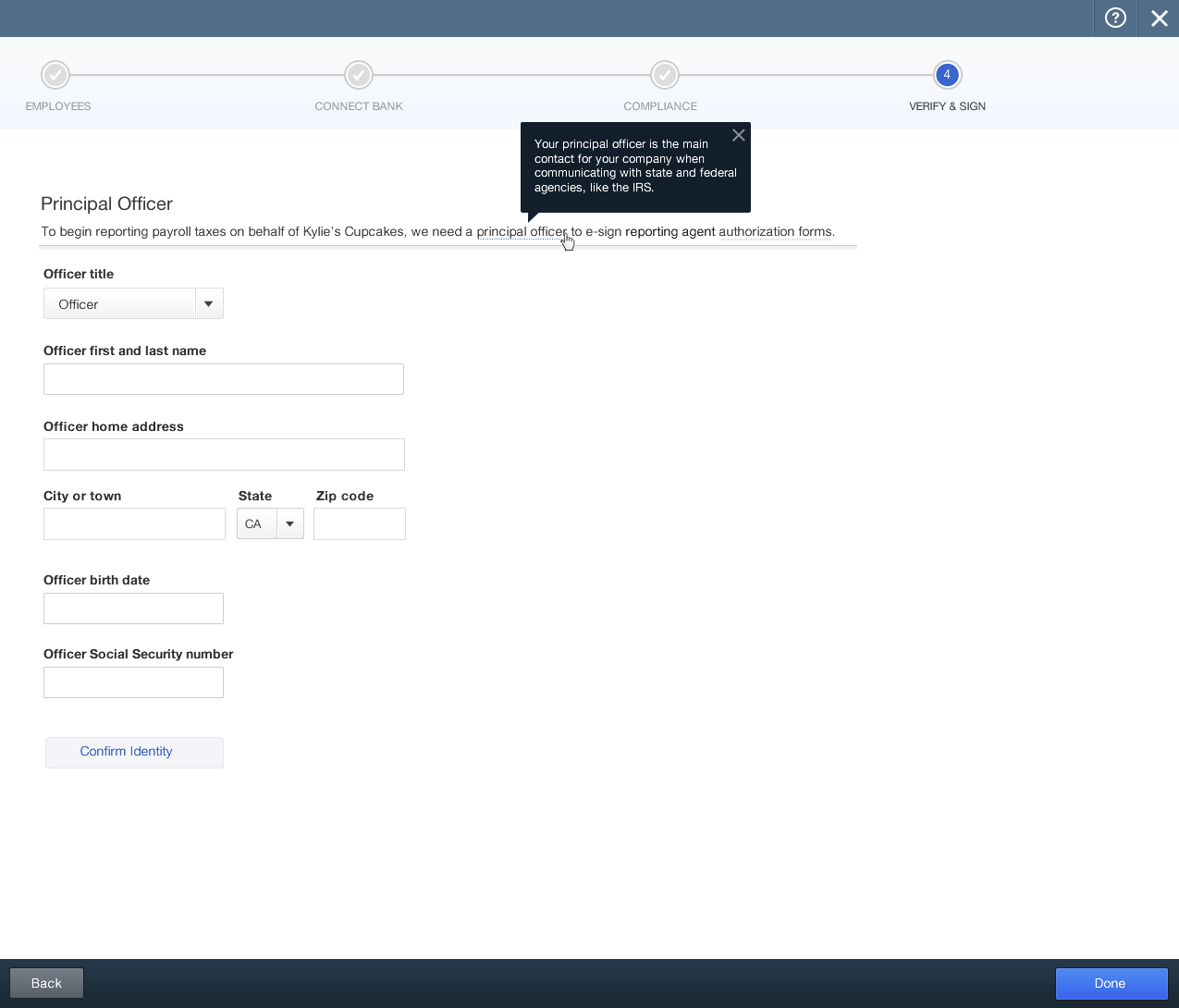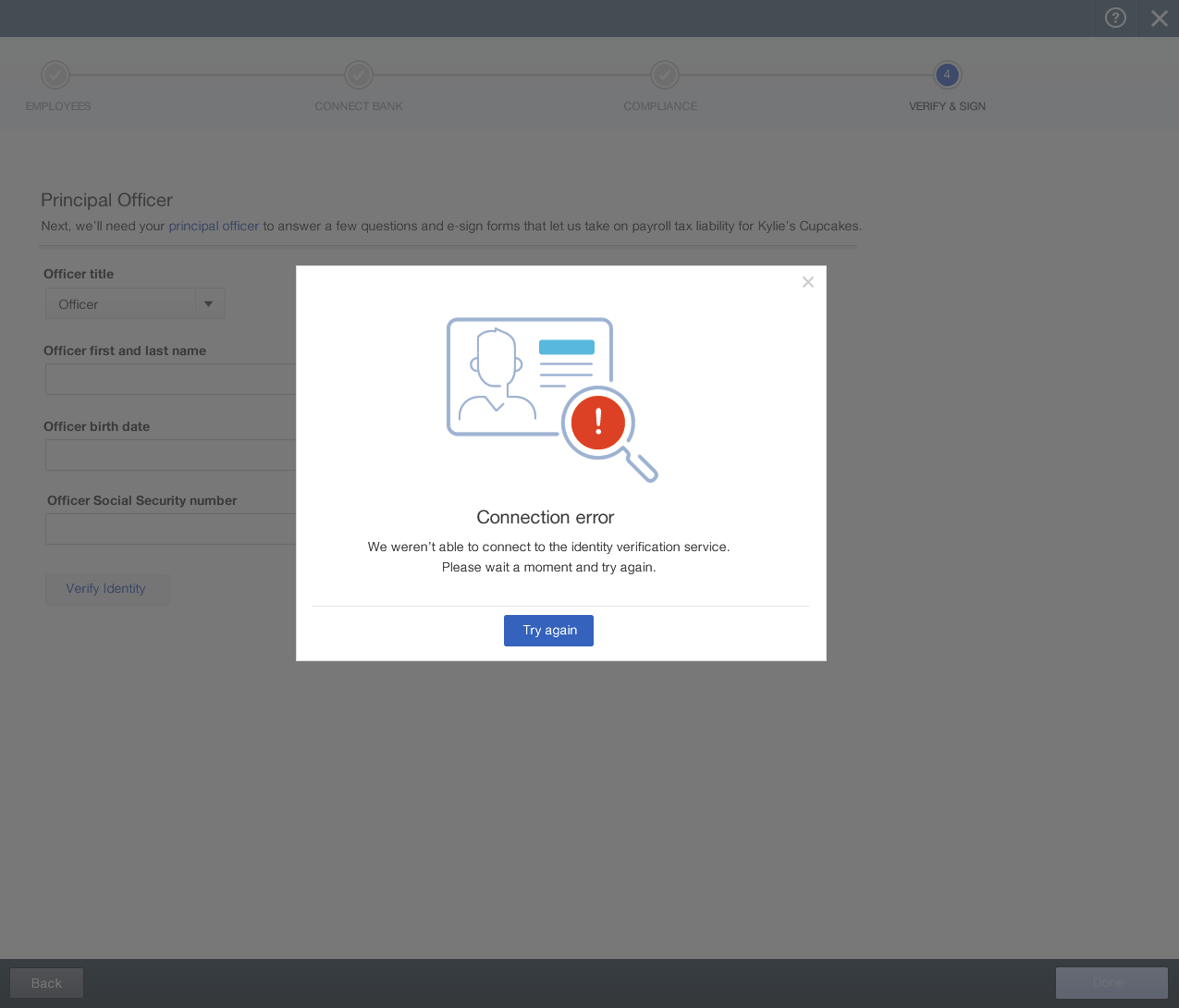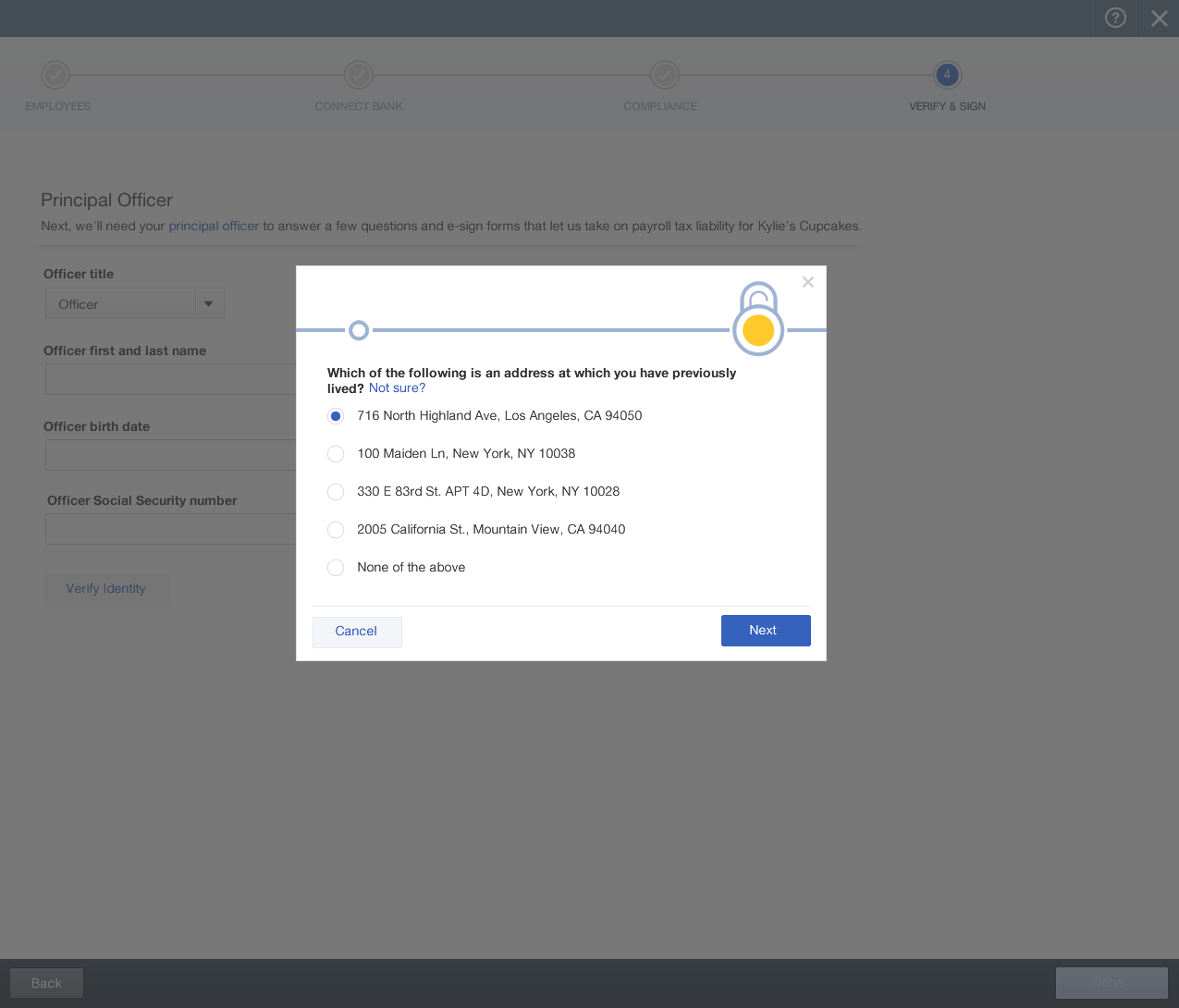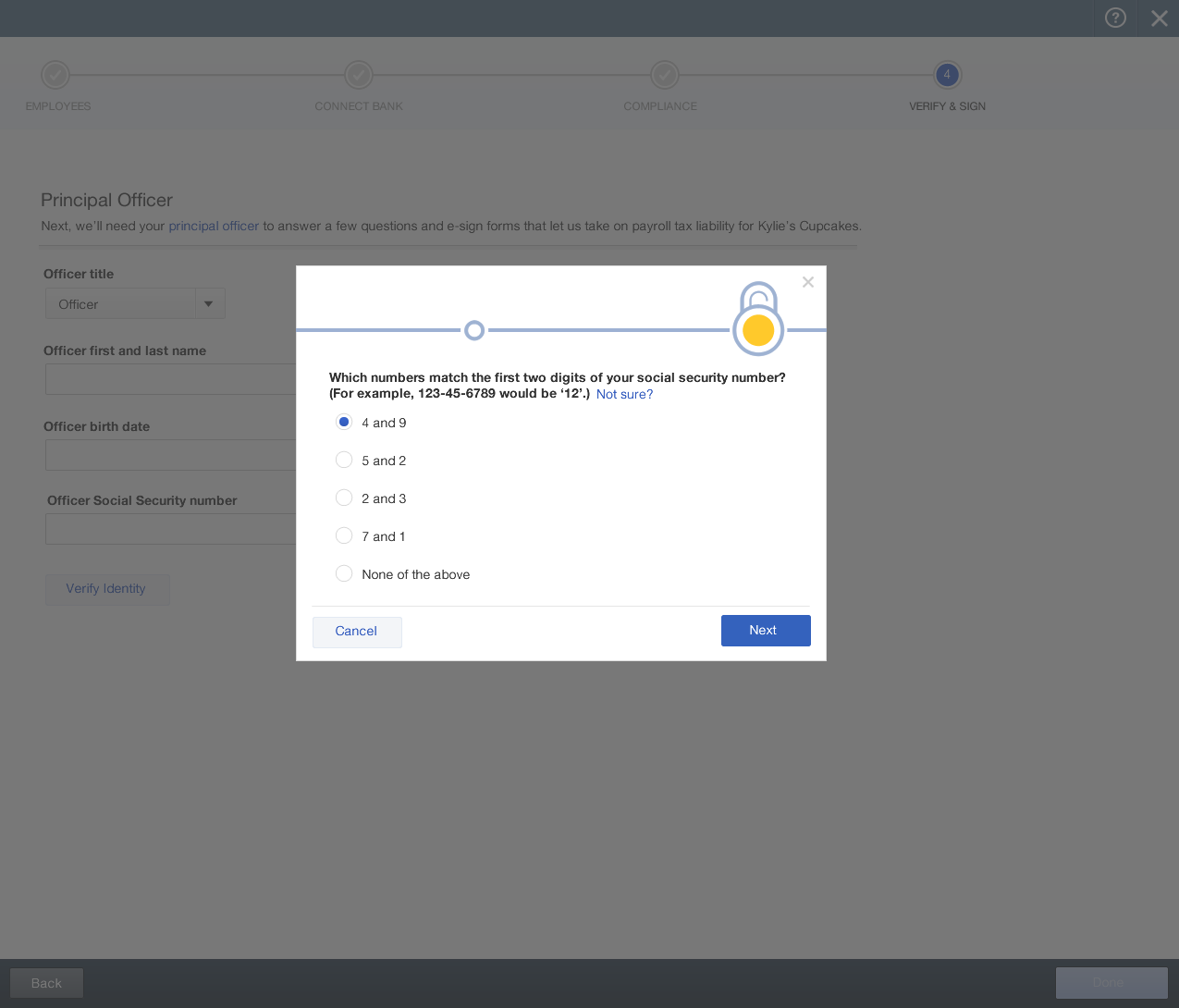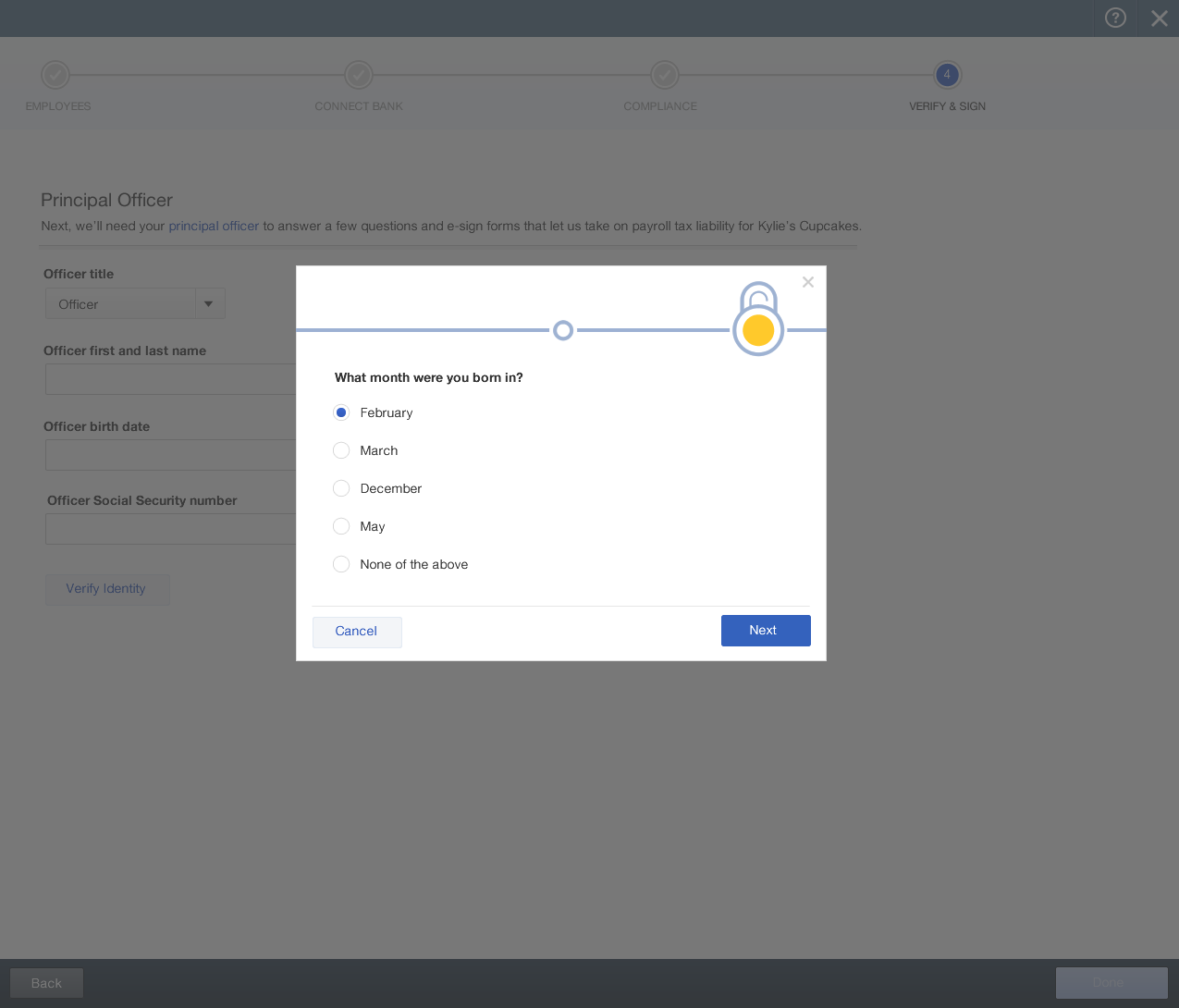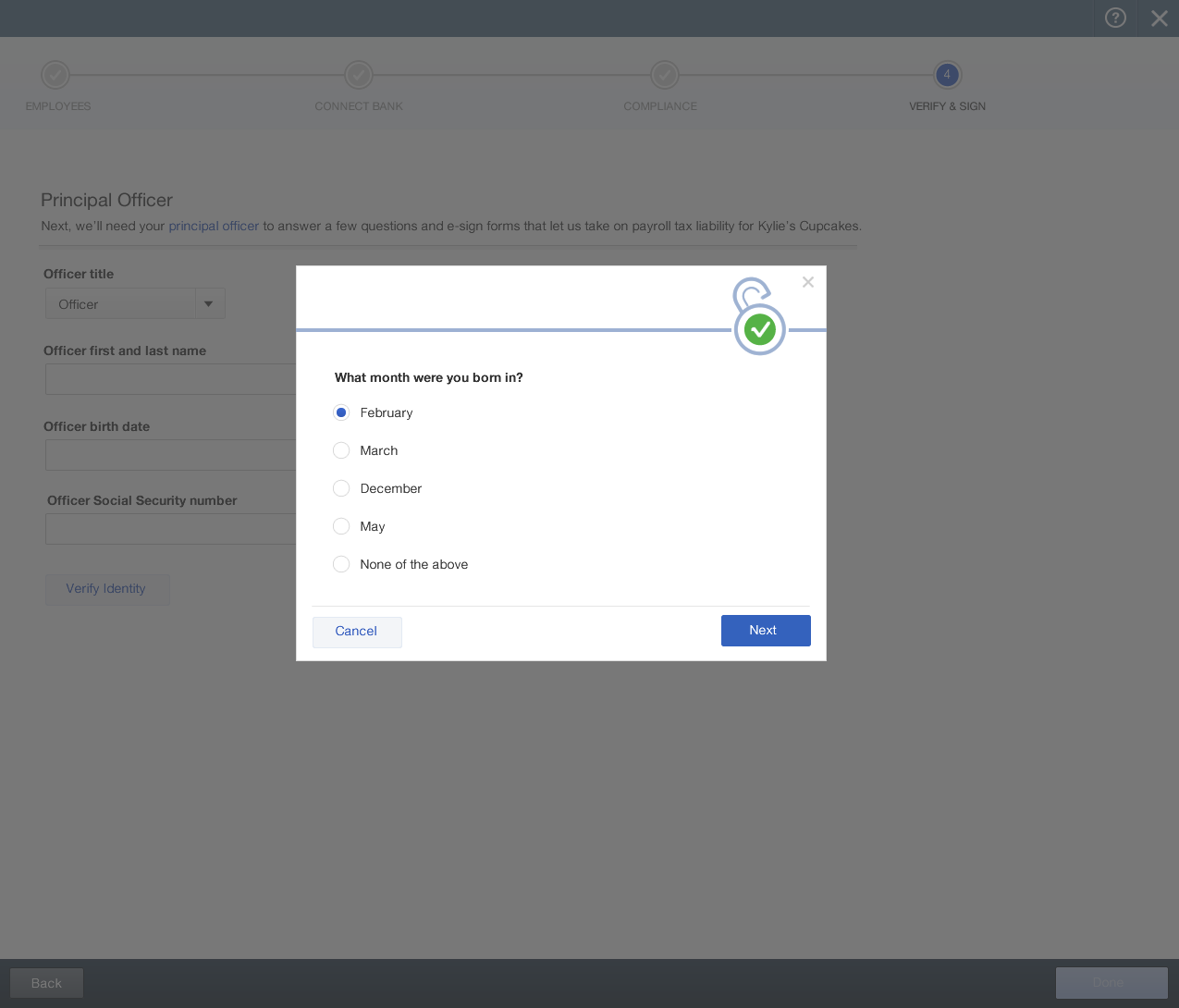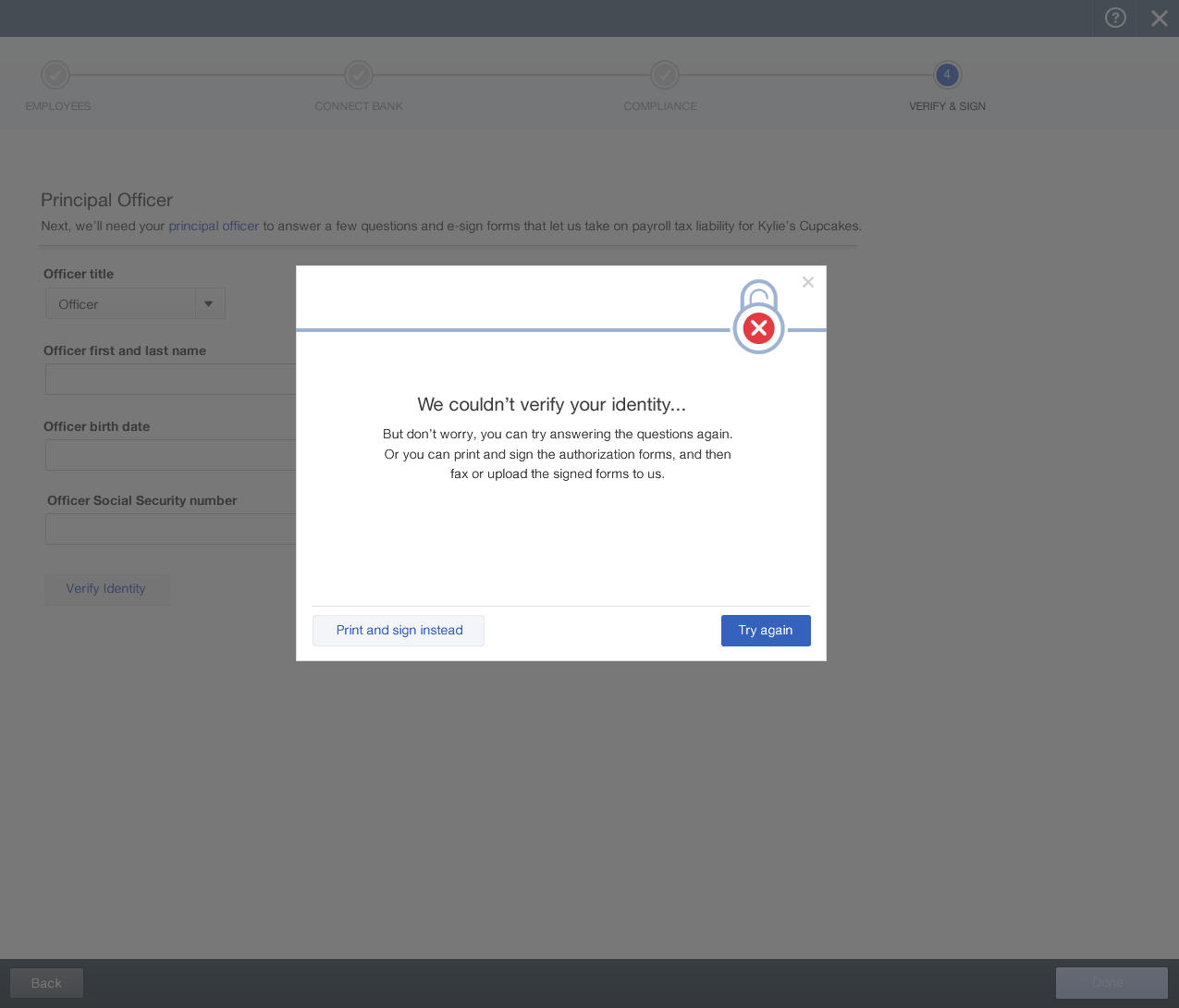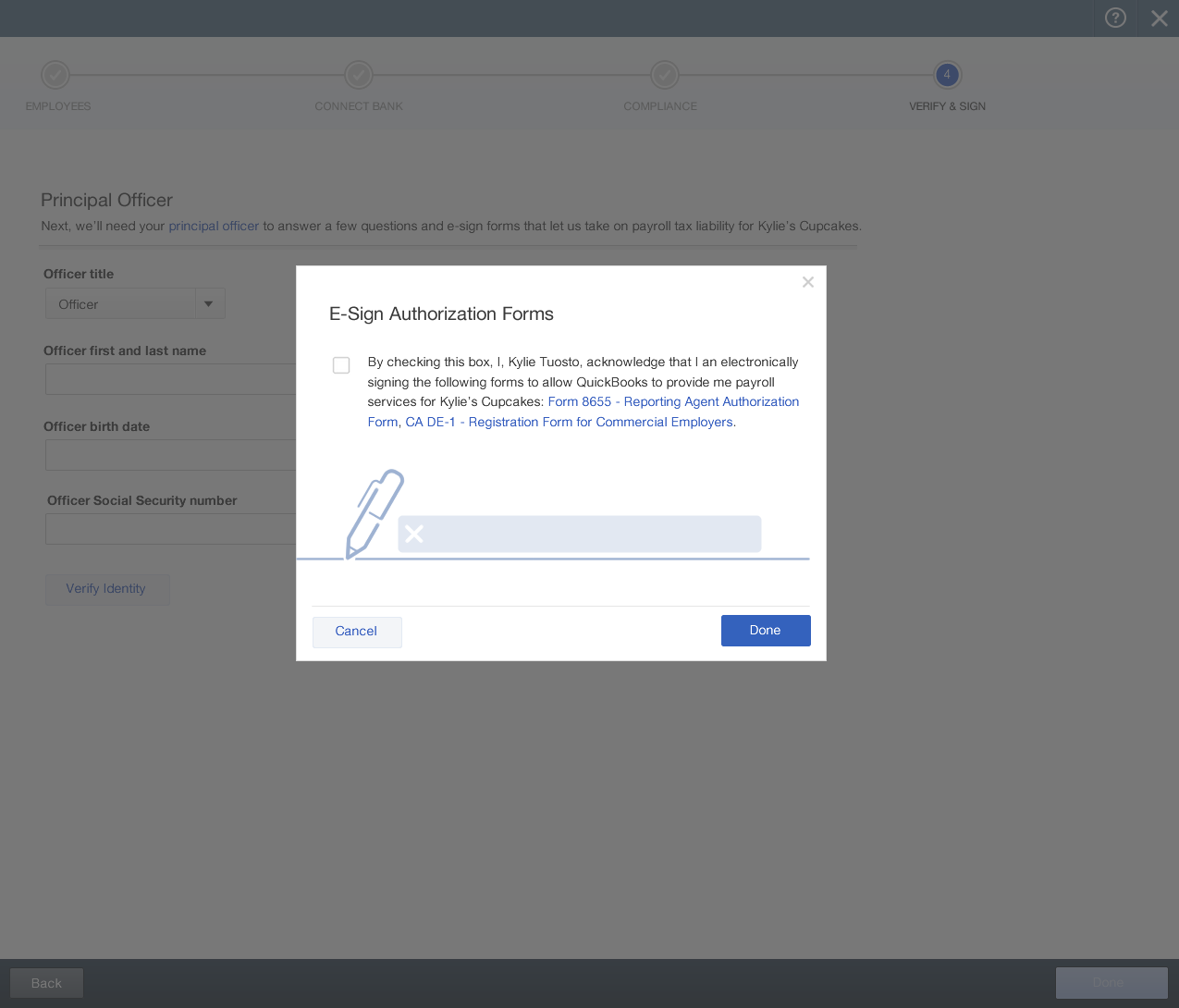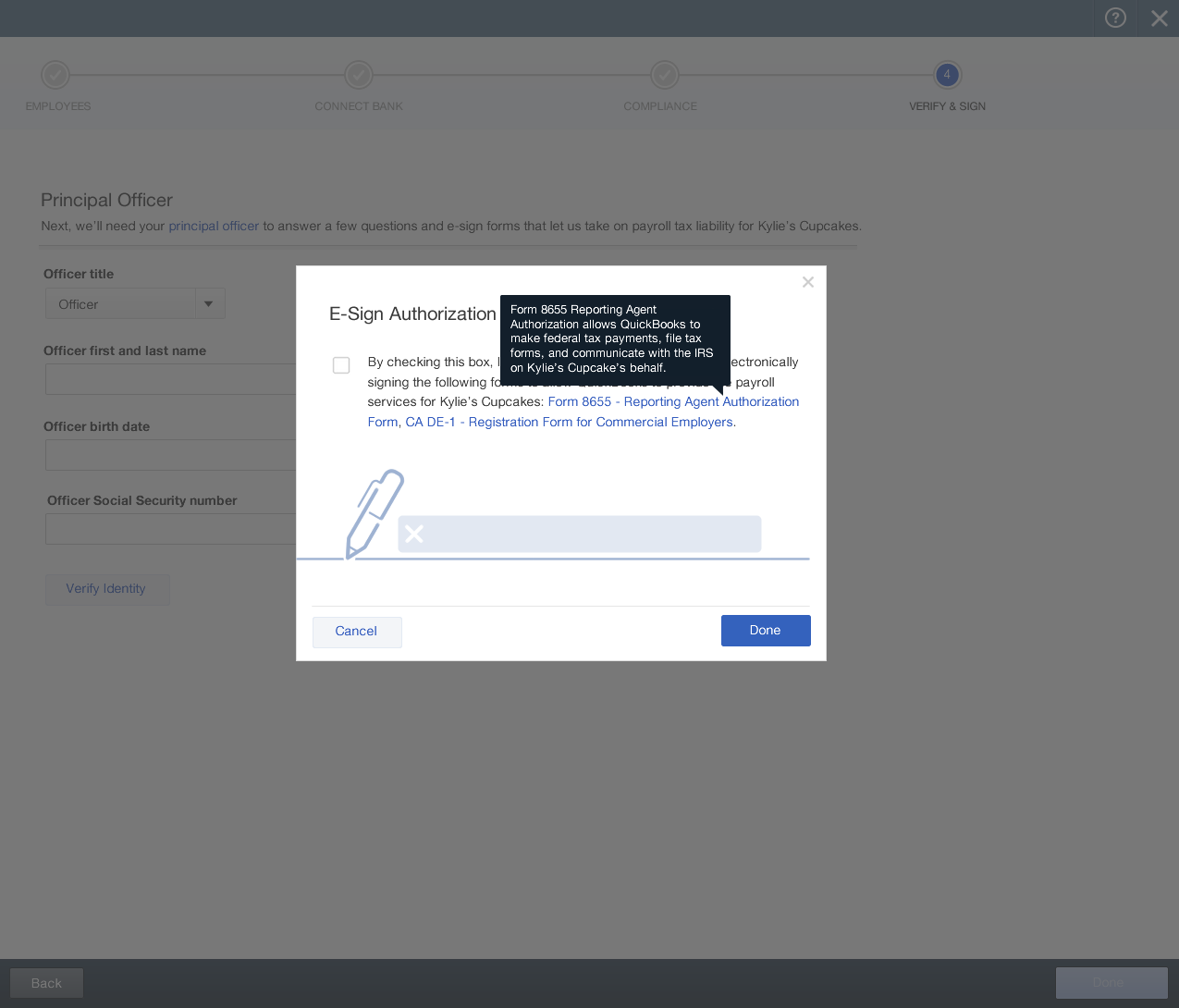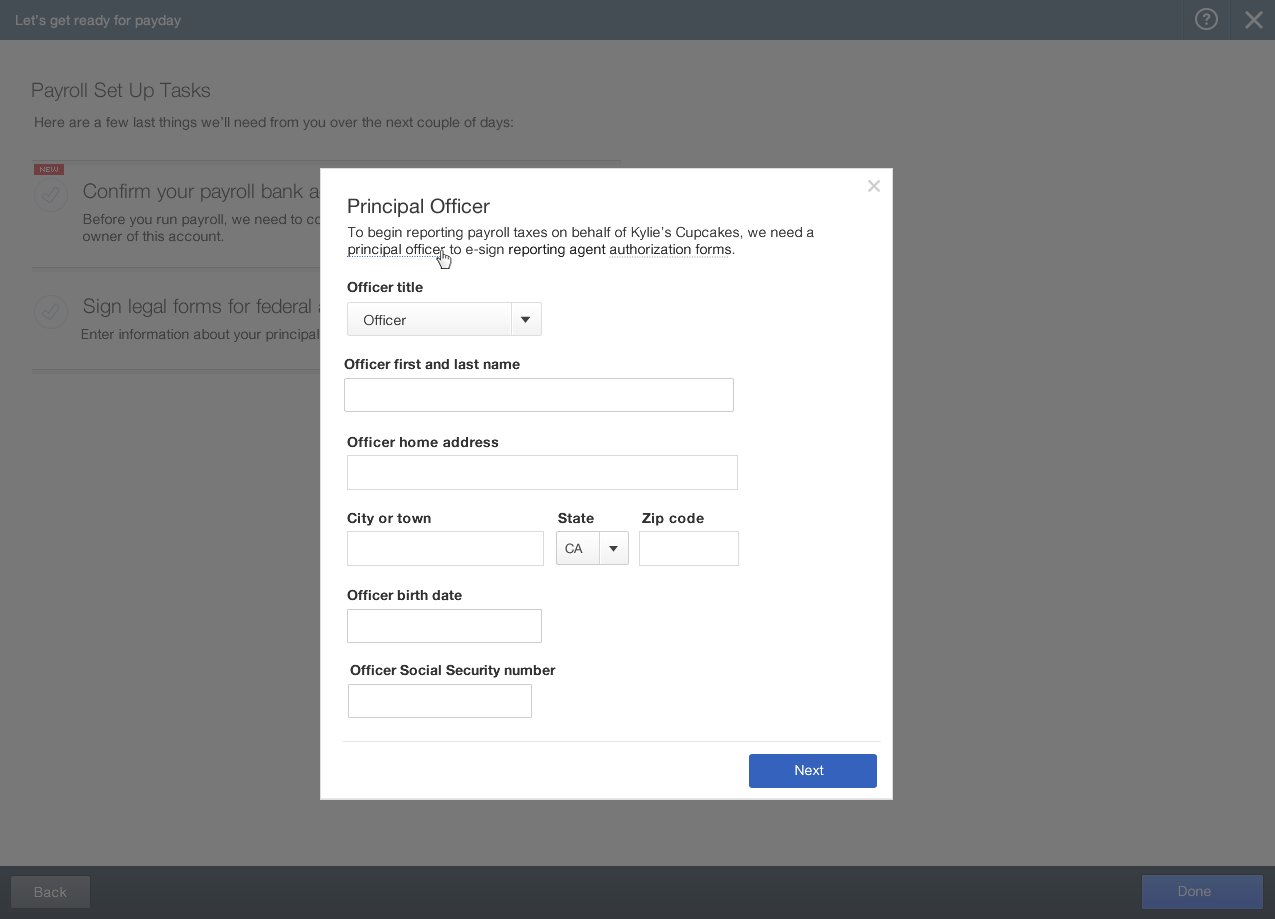IFSP E-Sign LEGAL FORMS
Feb 2014
As part of a larger initiative to eliminate the pain of Full Service Payroll Set Up, we took on a sub-project to reimagine the legal signature portion of the flow and eliminate the associated drop-off. This project required detailed technical discussion, multiple error case scenarios and a little bit of animation design.
THE PROBLEM
Intuit Full Service Payroll leveraged a 3rd party widget that forced users to verify their identity (by answering personal questions unrelated to their business) so that they could scroll through legal authorization forms (necessary for Intuit to take over payroll liability on their behalf), and click to sign in multiple locations. The widget was slow to load, the KBA questions weren't optimized for our target group, and often the person legally required to sign wasn't the same person who was setting up the account resulting in the highest drop-off rates through the set up experience. The goal of this project was to clean up the UI leveraging 3rd party APIs instead of iFrames and work with our legal teams to create a check-to-sign model to make a smooth customer experience and eliminate drop-off. We also worked on concepts for delegating this task to the primary principal officer.
WORKFLOW DESIGN
Based on our original 3 step flow, I developed various alternatives for where and how this additional step could be incorporated. Some options leveraged modals while others involved extra steps in the flow.
Concept Sketches
After building out the concepts above, I asked the team to provide feedback and evaluate each concept. Ultimately we landed on Concept D, which appropriately balanced the complexity and screen real estate issues. After that, I began brainstorming ways to make the flow feel seamless leveraging our line-art illustration style and animation.
Check-to-sign Concepts
In order to eliminate scrolling through pages of confusing legal documentation, we decided to hide the documents from the user and allow them to apply their signature simply by checking a box. However, legally, we're required to provide access to those documents should the user care to review them. These were explorations into how much detail to give in page before opening a PDF of the document in a second browser tab.
Principal Officer Delegation Concepts
In many cases, the person who's signing up to use the Full Service Payroll software may not be the person legally capable of authorizing Intuit to handle taxes on behalf of the business (for example an office manager or employee vs. the business owner). In these cases, we needed a smooth way to delegate this responsibility to someone else without confusing folks who should complete this step themselves. I explored a variety of ways of handling this in the UI, each with varying degrees of success.
Animation explorations
After fleshing out detailed wireframes and use cases, I worked with a visual designer to prototype some of the animations including the loading indicator, the progress animation, and the vector drawing of the customer's name on the signature line.
Final SCREENS & use cases
To start addressing the customer pain points identified in early research, we got together with our support team for concept jams and sketch sessions. Once we had a few ideas for the workflows and customer segments, we checked back in with the larger team for iterative feedback cycles.
